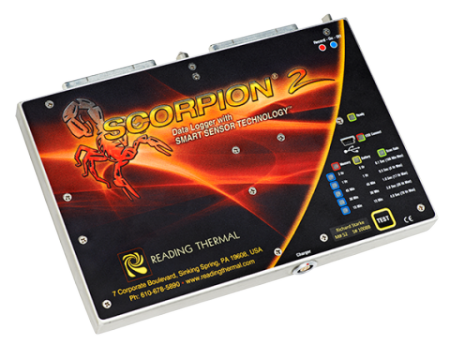Getting the perfect bake is part art and part science. While the visual cues – like color and texture – give you a quick snapshot, they don’t always tell the whole story regarding how to determine adequate baking by thermal profiling. By tracking internal product temperatures and oven conditions in real time, thermal profiling products from Reading Thermal allow you to fine-tune your bake and ensure it meets the necessary parameters for quality and safety.
At Reading Thermal, we specialize in helping bakeries get the most out of this powerful process with the SCORPION® 2 Profiling System. It’s the go-to tool for capturing the information that shows you exactly when a product is adequately baked—no guesswork involved.
What Is “Adequate” Baking, Really?
Adequate baking isn’t just about browning the crust or crisping the edges. It means that the product has gone through all the thermal events required for proper structure, texture, and microbial safety. From starch gelatinization to protein denaturation to moisture evaporation, every phase of the baking cycle plays a critical role.
Achieving a kill-step (the moment when pathogens are effectively eliminated) is part of what defines an adequate bake. This typically occurs when the internal temperature of the product reaches around 185°F (85°C) and holds for a sufficient period. But every product has its own profile. That’s where our SCORPION® 2 Data Logger becomes essential – it shows you what’s happening inside the product, in real time, as it moves through each oven zone.
Using Thermal Profiling to Track Key Events
The beauty of thermal profiling lies in its ability to provide a detailed map of your baking process. Using Reading Thermal’s SCORPION® 2 system, you can capture precise internal temperatures of your product throughout the bake. The system logs this data and provides an easy-to-read graph that identifies important thermal events.
For example, you’ll be able to see exactly when starches gelatinize, typically around 140-167°F (60-75°C), which is key to forming the structure of breads and cakes. You’ll also identify protein denaturation (which helps set the crumb and crust), sugar caramelization, and when the core temperature crosses that critical microbial kill zone.
By monitoring these stages, you can determine whether your oven is providing enough energy and dwell time to complete the bake. If it’s not, the data will show you where adjustments are needed—whether that means extending bake time, increasing zone temperatures, or improving airflow.
Making Data-Driven Adjustments
In the past, bakers relied heavily on sight, smell and experience. While those instincts are still valuable, data gives you the edge when scaling production or troubleshooting inconsistencies.
Let’s say your cakes are collapsing in the center, or your crackers are coming out underbaked in one zone of the oven. With thermal profiling, you can see if the product’s core temperature reached its target or if there was a temperature dip in a specific zone. That insight allows you to make targeted adjustments and avoid costly waste.
Reading Thermal’s SCORPION® 2 system is designed for just this kind of work. It’s flexible, durable, and can be configured with different sensor arrays to measure not only internal product temperature but also environmental factors like air velocity and humidity. This gives you a complete picture of your baking process and allows you to maintain consistency across every batch.
Learn more about how to determine adequate baking by thermal profiling by contacting us online or calling Reading Thermal at 610-678-5890.

